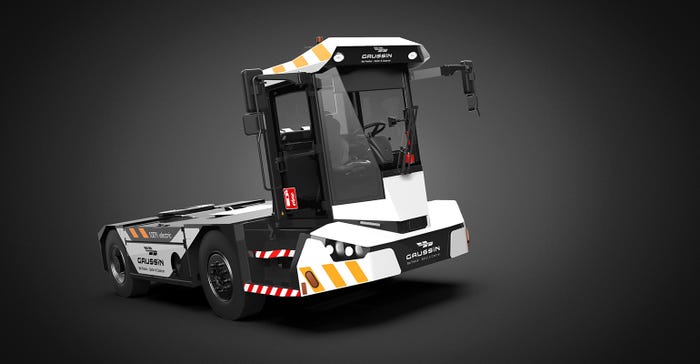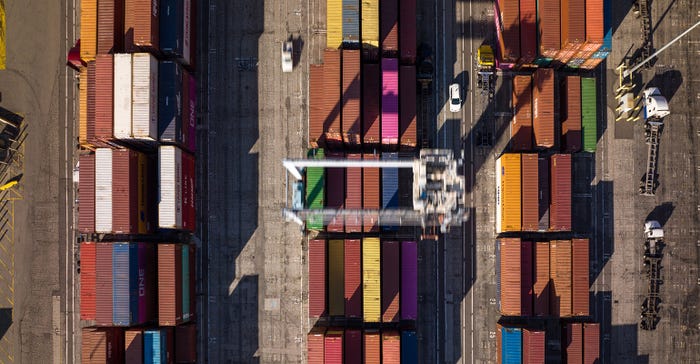California regulators just voted to ban the sale of new diesel trucks by 2036. Will other states follow? A report by Gladstein, Neandross & Associates highlights the current status of the zero-emission truck market.

The California Air Resources Board (CARB) has approved a new regulation—called the Advanced Clean Fleets (ACF) regulation— that bans the sale of new diesel trucks by 2036. The ACF states that the proposed regulation would apply to fleets performing drayage operations, those owned by state, local, and federal government agencies, and high-priority fleets.
High-priority fleets are entities that own, operate, or direct at least one vehicle in California and that have either $50M or more in gross annual revenues or that own, operate, or have common ownership or control of a total of 50 or more vehicles (excluding light-duty package delivery vehicles).
The proposed regulation would affect medium- and heavy-duty on-road vehicles with a gross vehicle weight rating greater than 8,500 pounds, off-road yard tractors, and light-duty mail and package delivery vehicles.
According to a report titled “State of Sustainable Fleets 2023 Market Brief” by clean technology consulting firm, Gladstein, Neandross & Associates (GNA), it’s not just regulators who are moving to zero-emission vehicles (ZEVs).
"The past year has brought a historic amount of investment from the federal government, as well as from private industry,” stated Erik Neandross, chief executive officer of GNA. “Across clean fuel types, we’re seeing accelerating momentum and an increasing commitment to low carbon fuels and zero-emission commercial vehicles.”
The fleet industry is testing battery electric vehicles
GNA’s report states that most fleets want to pilot battery electric vehicles (BEVs) before committing to widespread adoption, both to gain a better understanding of the opportunity and the actual total transition cost, which remains high. In 2022, many fleets also noted supply limitations while manufacturers are still working to ramp up production capacity, and deal with lingering post-pandemic global supply chain challenges.
“We're building on 20-plus years of lessons evaluating hybrids, EVs, smart charging, and grid impact in our medium-duty delivery fleet to shape strategies and plans for BEVs in our HD less-than-truckload fleet at FedEx Freight," stated Thomas Griffin, manager strategic fleet programs of FedEx Freight.
Supply chain challenges and high prices
GNA’s report explains in depth the supply-chain challenges that BEV production faces, such as the supply of batteries. “Between May 2020 and May 2022, price hikes in steel, aluminum, cobalt, nickel, and lithium drove up raw materials costs for EVs by 140%, and in 2022, graphite supplies became an emerging concern,” the report notes. “These have driven battery prices up by at least 14% to between $160/kWh and $270/kWh, even as more models have become available. Historically, the industry has estimated HD truck battery pack prices at approximately twice the passenger car price on a per-kilowatt-hour basis, suggesting that a 450-kWh pack could cost between $144,000 and $243,000 before taxes and fees.”
But even though these challenges continue, fleet manufacturers are moving forward thanks to private investment and federal funds target onshoring: “With supply chain challenges stymying deployments, state and federal programs allocated billions to address bottlenecks. The Chips and Science Act and the IIJA together allocate more than $300B to develop a US battery industry with a near-term focus on semiconductors, mineral extraction, and recycling.”
Electric school bus and yard trucks market ramping up
The GNA’s report also highlighted the increasing adoption of electric school buses. ”Electric school bus orders accounted for nearly 60% of HD BEV sales in 2022, thanks in large part to federal funding targeting this sector.159 EPA’s Clean School Bus program received more than 2,000 applications for nearly $4 billion in funding for approximately 12,000 buses, more than 90% of which were battery electric.
Demand for battery-electric yard trucks is growing too. In 2022, the yard truck orders tripled, exceeding 600 new units. Just recently, Gaussin Group—a French yard truck manufacturer—received an order from Amazon for 329 electric yard tractors to be used at Amazon’s US sites.

”This important electric yard tractor order by Amazon represents a significant milestone for Gaussin’s revenue growth and global expansion. Amazon’s choice of Gaussin is a recognition of the maturity of our turn-key zero-emission solutions, and of our technical, functional, and design differentiators,” said Christophe Gaussin, CEO and President of Gaussin Group. ”We look forward to working with Amazon to help achieve their decarbonization goals.”
Another example of electric yard tractor adoption is the announcement made by The Port of Long Beach (POLB). POLB received a $30.1M grant from the US Department of Transportation to deploy the nation’s largest fleet of manually operated zero-emissions cargo handling equipment at a single marine terminal. The project will bring approximately 60 electric, human-operated yard tractors to Long Beach Container Terminal (LBCT).
The project at LBCT—which can move 3.3M cargo container units annually, more than most US ports—also includes the construction of electric equipment charging stations with energy efficiency-enhancing software, training for operators and maintenance personnel, and installation of software equipment to streamline cargo-handling operations within the terminal.

”This project is a critical step along our path toward zero emissions, will support good-paying jobs, and reduce climate and air-quality impacts on nearby communities,” stated Port of Long Beach Executive Director Mario Cordero. ”It is everything we strive for as the nation’s most sustainable seaport – moving cargo in a way that protects the health of our residents while ensuring our operations can continue to grow and support the economy.”
According to GNA’s report, electric yard truck vehicle testing has been underway for several years, and POLB’s deployment indicates a readiness to test the technology at scale.
Highlights of GNA’s report
This year’s report has many findings in the clean transportation markets, such as:
• The federal government and California have adopted rules requiring an 80% reduction in nitrogen oxide (NOx) emissions from diesel engines, adding tens of thousands of dollars to the cost of new diesel engines and likely requiring additional ongoing maintenance.
• More than $32B per year, on average, in public incentive funding for clean vehicles and infrastructure will be available for the next 4-5 years.
• A total of 13 states and the District of Columbia have passed or are considering some form of California’s ZEV sales mandate on manufacturers, and these same states are expected to consider California’s ZEV purchase mandate on fleets that passed last week.
• Orders for medium- and heavy-duty battery-electric vehicles surged 640%, with nearly 30,000 medium-duty orders and 2,400 heavy-duty battery-electric school bus orders in 2022.
• At least half of fleets across 11 different fleet types, including logistics, transit, school, cargo, and delivery fleets, have operated a medium- or heavy-duty battery-electric vehicle in the annual survey, and 92% of those fleets plan to grow their use.
• Supply chain disruptions have raised the price of medium- and heavy-duty battery-electric vehicles, and delays for electrical service have caused multi-year delays for some deployments.
Editor's note: To learn more, see our feature and gallery on six new battery-electric trucks announced this year.
About the Author(s)
You May Also Like





